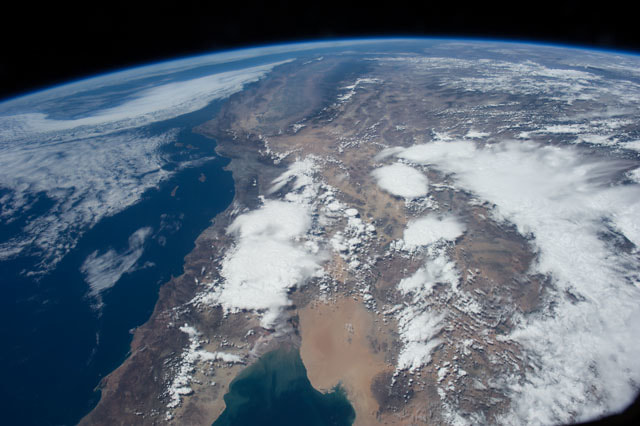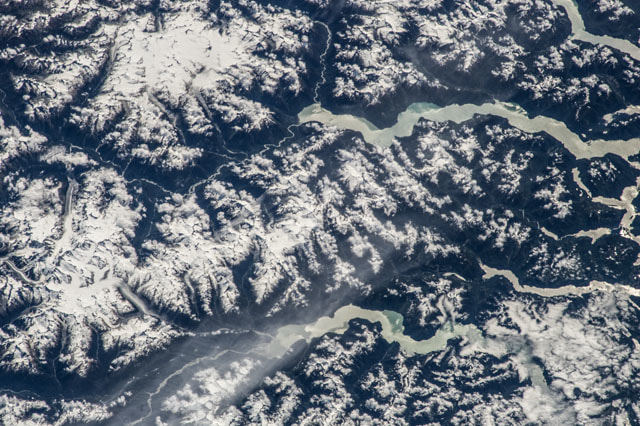Mission Cerveau Nord - BrainReach North
|
Can I contribute to scientific discovery without even leaving my home? Yes, by being a citizen scientist. What is a citizen scientist? Anyone who participates in large group projects led by professional scientists. Citizen scientists do not just repeat old experiments with known outcomes. They actually contribute to creating new knowledge. There are many different groups asking the public to help provide or analyze data, which will then be grouped together by professional scientists. One new initiative is to identify and label photos taken by astronauts from the International Space Station. There are over 1.5 million photographs taken by astronauts from 18 nations over the past 20 years. Citizens are working together to create a library of images that are labelled and searchable. The labels will include geographic regions (e.g., Northern Canada) and features (e.g., rivers and glaciers), and weather events (e.g., cyclones). Going through the images is fun and easy. Also, you can save any images you want to your desktop. You might be thinking, ‘how can I recognize what is in the photograph’, or ‘what if I make a mistake?’ Don’t worry. There is an interactive program that asks you questions to guide you. If you can’t locate a geographic region, there will be an option to simply put you can’t find it. All photos will be analyzed by 15 different people. So if you happen to make a mistake, your data won’t be counted. It’s very unlikely 15 people will make the same error. You might be wondering, why not just have computers do the job? Turns out, people are still better at it than computers, which currently can’t tell clouds from ice and other objects with similar characteristics. The images that citizen scientist label could be used as a future tool to train computers. How can you become a citizen scientist right now? By becoming NASA’s Image Detective here (https://cosmoquest.org/x/beta/). Click on “Launch Image Detective” and get started! Can you find a photograph that contains the region you live in? I heard about this specific initiative on the podcast, “A skeptic’s guide to the universe” (available here, [http://www.theskepticsguide.org/podcast/sgu/639]; Podcast #639 - October 7th, 2017), in an interview with astrologist and data scientist Pamela Gay (https://www.starstryder.com/about-me/). Besides having fun with these images, why even bother to label all these photographs? The library will be freely available to researchers at universities, industry, and citizen scientists to search for answers to any questions that might interest them. For example, Pamela Gay suggests looking at how irrigation systems work in farmlands. Remember these images have been taken over the period of 20 years. They will provide an excellent way to study changing coastlines and glacier sizes over time. Studying changes in pathways of rivers and ice flows in Northern Canada is another exciting possibility. If looking at photos of the Earth doesn’t seem as interesting as looking for supernovas or craters on Mars, you are in luck. NASA has many more citizen scientist initiatives here. (https://science.nasa.gov/citizenscientists). Also, NASA isn’t the only organization using citizen scientists. There are several other organizations. Additionally, you can contribute to science by participating in large research projects as a research subject, playing games or answering surveys. To find out more, click here. (http://www.citizensciencecenter.com/) Written by Rhalena Edited by Suna UPDATE: Do you want to be a citizen Neuroscientist? Check out this game called Mozak (https://www.mozak.science/landing), where you can trace real neurons to help scientists learn more about the brain! UPDATE for the French projects: Abovementioned projects and websites are available only in English but here are some projects in French:
Finally, Data gathering projects related to ecology and botany can be found here (http://www.tela-botanica.org/page:liste_projets?theme=2) and here (http://www.mycologie-cmaq.org/cmaq/index.php).
0 Comments
Leave a Reply. |
LINKS FOR TEACHERS
AuthorLearn more about our bloggers on the "Meet Our Team" page. Archives
May 2022
Categories
All
|
|
Return to home page
|
Go to BrainReach Montreal/ Mission Cerveau
|


 RSS Feed
RSS Feed





